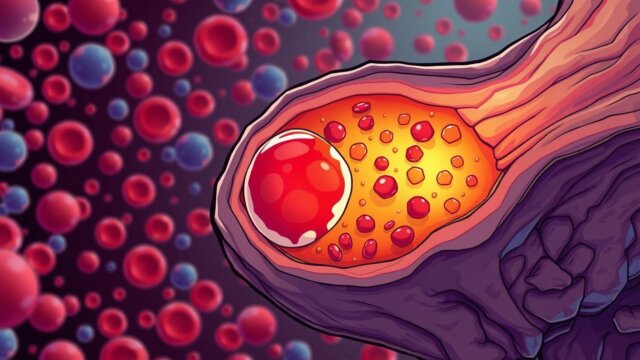FTC disclaimer: This post may contains affiliate links and we will be compensated if you click on a link and make a purchase.
Did you know a person with uncontrolled diabetes might have blood sugar levels up to 500 mg/dL? This is a serious issue that needs quick action to avoid severe health problems. Luckily, there are ways to lower your blood sugar safely and fast.
Key Takeaways
- Regular exercise for 150 minutes a week can make your body more sensitive to insulin and help manage blood sugar.
- You should aim for 25 grams of fiber a day if you’re a woman and 35 grams if you’re a man to keep your blood sugar stable.
- Drinking more water can also help lower your blood sugar, as shown in a 2021 study.
- Watching how much you eat can help you stay at a healthy weight and lower your risk of type 2 diabetes.
- Eating foods with a low glycemic index like whole grains, beans, and veggies can help lower blood sugar in people with diabetes.
Take Fast-Acting Insulin and Exercise
Managing high blood sugar is key for people with diabetes. Two ways to lower blood sugar fast are using fast-acting insulin and exercising.
Fast-Acting Insulin for Immediate Blood Sugar Reduction
Insulin like Humalog, Novolog, or Apidra works quickly. It helps your body use glucose in your blood, lowering high sugar levels. Talk to your doctor about how much insulin to take when your sugar is high. Check your levels 30 minutes after taking insulin to make sure it’s going down safely.
Exercise to Lower Blood Sugar Quickly
Exercise is great for lowering high blood sugar. When you move, your body needs more glucose, taking it from your blood. This can lower your sugar for up to 24 hours or more. But, don’t exercise if your blood sugar is over 240 mg/dL and you have ketones in your urine. It could make your levels go up.
Staying active can also make your body more sensitive to insulin and lower your A1C levels over time. But, if you take insulin or certain other medicines, be careful. Exercise might make you feel low blood sugar if you don’t adjust your insulin or food right. The 15-15 rule is good for treating low blood sugar during or after exercise. This means eating 15-20 grams of carbs and checking your levels every 15 minutes until it’s at least 100 mg/dL.
Using fast-acting insulin and smart exercise together can help control high blood sugar and manage your diabetes.
“Regular physical activity can help lower A1C levels and improve insulin sensitivity.”
When to Seek Medical Attention
High blood sugar levels are a serious health issue. Knowing when to get help is key. If your blood sugar hits 300 mg/dL or more, it’s a medical emergency. You should call your doctor if you see two readings of 300 mg/dL or higher.
If you have symptoms like confusion, nausea, or shortness of breath, get help fast. These signs can mean diabetic ketoacidosis (DKA), a serious condition. You need quick treatment for this.
Hyperglycemia shows up when blood sugar is over 180 to 200 mg/dL (10 to 11.1 mmol/L). If your levels go over 240 mg/dL (13.3 mmol/L) and you have ketones in your urine, get medical help right away.
Things like not using insulin right, not eating well, not moving much, being sick, or stressed can raise your blood sugar. High blood sugar can cause big health problems, like heart disease, nerve damage, and eye issues.
Keeping your blood sugar in check is key to avoiding these issues. Check your blood sugar often and stick to your diet and medicine plan.

If you’re worried about your blood sugar or have severe symptoms, call your healthcare provider fast. Your health is the most important thing.
Dietary Strategies to Reduce Blood Sugar Level
Choosing the right foods is key to managing blood sugar for people with diabetes. Focus on foods with a low glycemic index (GI). Low-GI foods like whole grains, nuts, and some fruits are absorbed slowly. This helps prevent blood sugar spikes.
Choose Low Glycemic Index Foods
Whole wheat, pumpernickel, and rye bread are good choices. So are most fruits, sweet potatoes, oats, and nuts. Stay away from high-GI foods like white bread and fruit juices. Eating 25-30 grams of fiber a day, like in oatmeal, can help manage blood sugar.
Low Glycemic Index Foods | High Glycemic Index Foods |
|---|---|
Whole wheat, pumpernickel, and rye breads | White bread, bagels |
Most fresh fruits (except pineapples and melons) | Fruit juices |
Sweet potatoes, oats, nuts | White rice, pretzels |
Adding more low GI foods to your diet and cutting down on high GI foods helps manage blood sugar. This can lower the risk of diabetes complications.
“Eating foods with a low glycemic index can be a game-changer for individuals with diabetes, helping to stabilize blood sugar levels and improve overall health.”

Working with a healthcare pro, like a dietitian, can help make a diet plan that fits your health needs and goals. With the right food choices, you can better manage your blood sugar and live healthier.
Lifestyle Modifications for Better Blood Sugar Control
Changing your lifestyle can help manage blood sugar levels for people with diabetes. Activities like walking, jogging, swimming, or lifting weights can make your body more sensitive to insulin. Try to do at least 150 minutes of moderate exercise each week.
Even simple tasks like cleaning, gardening, or walking can help control blood sugar.
Managing stress is key because stress hormones can raise blood sugar. Meditation, yoga, or deep breathing can help keep stress down and help with diabetes. Also, getting enough sleep and drinking plenty of water are key for keeping blood sugar stable.
Checking your blood sugar often is crucial for people with diabetes. It’s important to check before, during, and after exercise because it can change your blood sugar levels. Drinking water during workouts is also important because not drinking enough can affect your blood sugar.
By making these lifestyle changes, people with diabetes can better manage their condition and lower the risk of problems. Always talk to a doctor to make a plan that fits your needs and goals.

“Diabetes doesn’t have to hold you back from living a full, healthy life. With the right lifestyle modifications, you can take control of your blood sugar and improve your overall well-being.”
Conclusion
Keeping blood sugar levels healthy is key for people with diabetes or prediabetes. It helps avoid serious health issues. The best ways to lower blood sugar include using fast-acting insulin, exercising, eating foods with a low glycemic index, and changing your lifestyle. This means managing stress and sleeping well.
Using these proven methods helps you control your blood sugar and boosts your health. It’s vital to check your blood glucose often. You can do this with capillary blood glucose tests or continuous glucose monitoring. This helps you see how well your plan is working and lets you make changes if needed.
Managing diabetes or prediabetes is a long-term effort. It’s important to work with your healthcare team to find what works for you. With the right mix of medical care, diet changes, and lifestyle adjustments, you can manage your blood sugar reduction, diabetes management, and live a healthier lifestyle.
FAQ
What are the quickest ways to lower blood sugar levels?
Fast-acting insulin and exercise are the quickest ways to lower blood sugar. Insulin helps lower high blood sugar levels. But, watch your levels after taking insulin to avoid going too low. Exercise also helps by making your body more sensitive to insulin.
When should I not exercise to lower blood sugar?
Don’t exercise if your blood sugar is over 240 mg/dL and you have ketones in your urine. It can make your blood sugar go even higher.
When should I seek medical attention for high blood sugar?
High blood sugar levels of 300 mg/dL or more are dangerous and need medical help. Call your doctor if you have two readings of 300 mg/dL or more. Get immediate medical care if you have symptoms like confusion, nausea, shortness of breath, stomach pain, vomiting, or a fruity smell. These signs can mean diabetic ketoacidosis (DKA), a serious condition that needs quick treatment.
How can I manage blood sugar through diet?
Eating foods with a low glycemic index (GI) can help manage blood sugar. Foods like whole grains, nuts, legumes, some fruits, non-starchy vegetables, and lean proteins are absorbed slowly. This helps prevent blood sugar spikes.
What other lifestyle changes can help control blood sugar?
Regular exercise, managing stress, getting enough sleep, staying hydrated, and checking blood sugar levels often are key. These habits help keep your blood sugar in a healthy range.








